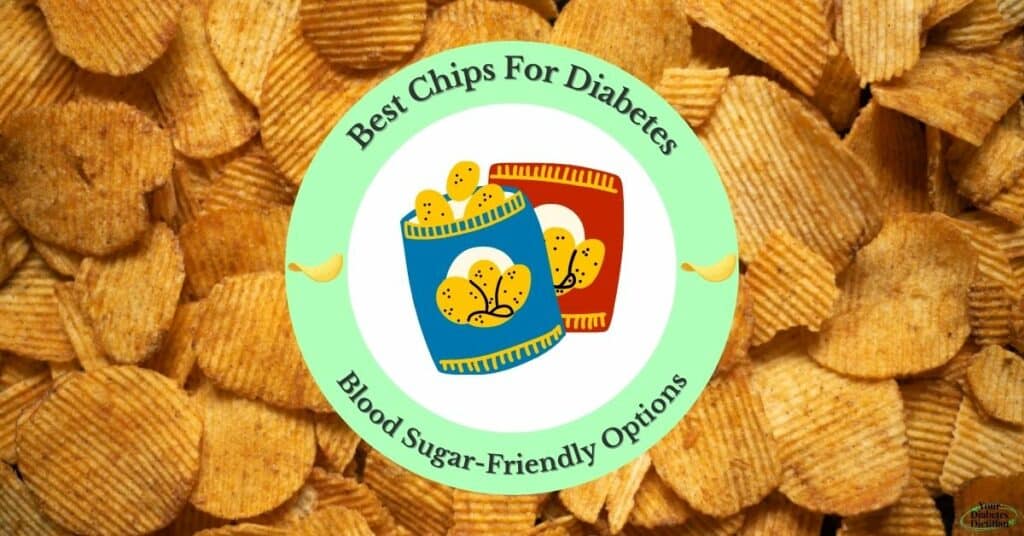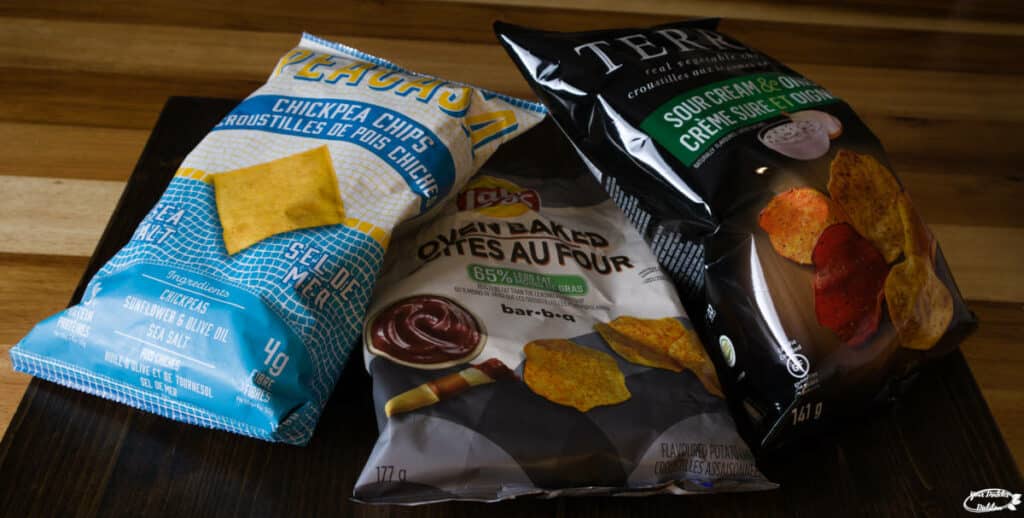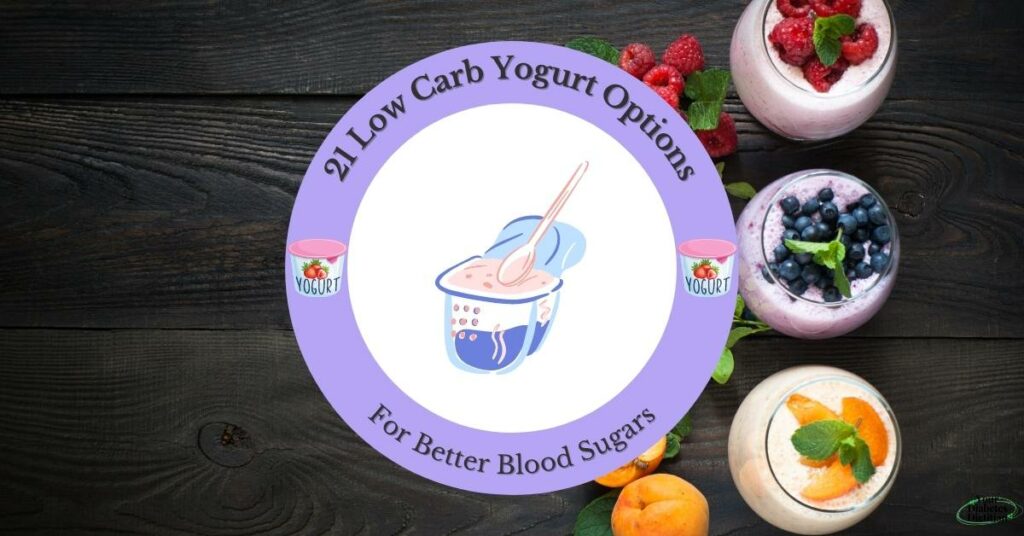Managing diabetes requires careful attention to what you eat. If you’re here, you’re obviously looking for the best chips for diabetes. After all, who doesn’t love to snack?
In fact, nearly half of Canadians have chips among other snack foods at least once a week (1).
The good news is that there are chips you can splurge on that can satisfy cravings without causing a significant blood sugar spike. Truth be told, chips are the epitome of crunchy goodness and it’s perfectly okay to enjoy them from time to time.
In this article, we will explore some of the best chips for diabetes, focusing on options that are low in carbohydrates, high in fiber, and made from wholesome ingredients. Whether you prefer savory or crispy snacks, these diabetes-friendly chips offer a delicious and healthier way to enjoy a guilt-free indulgence.
DISCLAIMER: This post was written by Justine Chan MHSc, RD, CDE. All content on this site is for informational purposes only and is not a substitute for professional medical or nutritional advice. Always seek medical and dietary advice from your doctor or dietitian.

Table of Contents
What to look for in chips
We all know chips tend to be high in fat, calories and sodium. They’re considered an ultra-processed food, and these types of foods have a reputation for increasing your risk of type 2 diabetes (2, 3). Chips also don’t fill you up for long.
Most chips contain 150 and 200 calories per serving, making them an energy dense food. Because we tend to overeat chips too easily…I don’t know, something about that salty, sweet crunch…eating large amounts can lead to weight gain.
So if you were to select the best option within the chip category, consider:
- Fiber – the higher, the better
- Saturated fat – the lower, the better
- Sodium – the lower, the better
- Baked over fried
- Free of artificial dyes
Tips for fitting chips into a diabetes-friendly diet
It’s not uncommon to consume chips in front of the t.v., at the movies, at a party, or maybe when we’re stressed and craving something salty and crunchy.
So how do we fit chips into a diabetes-friendly diet? Here are some strategies to consider:
- Mindfully eat each chip by savoring and enjoying every bite
- Swap out another carb at a meal (eg. a slice of bread) to reduce the total carb load
- Avoid eating chips right out of the bag
- Buy small halloween sized bags
- Pre-portion your chips into a small bowl
- Include a healthy pairing, such as nuts or a dip that’s high in fiber or protein
- Avoid eating chips in front of the t.v.
- Follow the 80/20 rule, 80% of your diet comes from wholesome, nutritious foods, the other 20% at your discretion

Healthy alternatives to chips
There are also some great alternatives to chips that satisfy that craving for salty crunchiness. Consider the following examples:
- Roasted seaweed
- Kale chips
- Nuts and seeds
- Air-popped popcorn
- Snacking beans like Black Edamame
- Harvest Snaps Snack Crisps or Crunchy Loops made of roasted lentils, beans or peas
- Whole grain crackers like Flackers or Mary’s Gone Crackers
But sometimes you just gotta have a chip, right? So let’s talk about how this list of chips was made.
How this list was made
The chips that made the list are either whole grain, whole food based, and lower in saturated fat and sodium compared to other brands.
Some of the chip brands that were included are higher in protein and fiber and some just taste great – not everything you eat has to be nutrient dense, just sayin’. It’s what you eat across your overall diet that matters the most.
Because after all, a chip’s a chip.
A typical serving size for chips is 1 ounce and the number of chips will vary depending on the brand.
The criteria used to curate this list includes the following:
Calories: 160 kcal or less
Carbohydrates: 15g to 20g net, minus the fiber
Fiber: at least 1g
Sodium: 360mg sodium or less (less than 15% Daily Value for sodium)
Free of corn syrup or artificial colours and dyes
With the exception of a few brands, chips typically are low in fiber, so make sure you get enough with your other snacks or try the suggested alternatives listed above.
Since the following are “specialty” foods and often more costly, consider them as splurge items. So without further ado, let’s dive into the best chips for diabetes!
Hilo
Serving size: 1oz (28g)
150kcal
5g carbohydrates, 2 grams fiber
9g protein
10g fat, 1g saturated fat
220mg sodium
Almond flour tortilla chips that are low in carbs and a great source of heart healthy fats? Yes please. You’ll love these dorito-style chips – one of the few that are high in protein and also an excellent source of calcium.
Terra Vegetable Chips
Serving size: 15 chips
150kcal
15g carbohydrates, 2g fiber
0g protein
9g fat, 1g saturated fat
83mg sodium
These veggie chips are sweet in flavor because they are made from vegetables like taro, sweet potato and parsnip. The colour in these chips comes from beet juice concentrate and they’re relatively low in sodium.

Sunchips Black Bean Southwestern Queso
Serving size: 14 chips
140kcal
18g carbohydrates, 3g fiber
3g protein
6g fat, 0.5g saturated fat
170mg sodium
Sunchips are made with whole grains, which has been linked with better blood sugars and cholesterol (2). You’re getting a few more grams of fiber and less fat compared to other chip brands.
Beanfields Nacho Bean Chips
Serving size: 11 chips
130kcal
16g carbohydrates, 4g fiber
4g protein
8g fat, 1g saturated
180mg sodium
Beanfields chips are amazing, especially because they contain more fiber and protein than other chips. Sprinkle some on your salads or add them to your favorite veggie platter with some dip. Made from black beans and navy beans, they’re also a great environmental choice.
Beanitos Tortilla Chips
Serving size: 11 chips
130kcal
15g carbohydrates, 4g fiber
4g protein
7g fat, 0.5g saturated
110mg sodium
These chips provide more fiber and protein than the leading tortilla chip. Made from whole black beans, they’re a great gluten free alternative!
Parmesan Cheese Crisps
Serving size: 23 crisps
150kcal
1g carbohydrate, 0g fiber
13g protein
10g fat, 7g saturated
350mg sodium
Since these chips are made from cheese, they are an excellent source of calcium and protein. Keep in mind, you’ll want to watch the portion size due to the higher saturated fat and sodium content.
Baked Lays
Serving size: 12 crisps
85kcal
15g carbohydrates, 1g fiber
1g protein
2.5g fat, 0g saturated
160mg sodium
These are possibly my favorite chips, they’re super crispy and worth the splurge. Since they’re baked, they’re lower in fat than other potato chips.
Hippeas Chickpea Puffs
Serving size: 1oz
130kcal
19g carbohydrates, 3g fiber
4g protein
4.5g fat, 0g saturated fat
210mg sodium
These puffs are cheesy in flavor and are to die for. If you’re looking for an alternative to cheetos, try these out!
Food Should Taste Good Black Bean Tortilla Chips
Serving size: 10 chips
130kcal
16g carbohydrates, 4g fiber
4g protein
6g fat, 0.5g saturated
80mg sodium
Another higher fiber chip for the win, thanks to the black beans, flaxseed, and quinoa. These tortilla chips are gluten free, low in sodium and taste great with a dip.
Kettle Brand Air Fried Chips
Serving size: 1oz
130kcal
18g carbohydrates, 1g fiber
2g protein
6g fat, 0g saturated fat
135mg sodium
We love the three ingredient list, and because it’s air fried, there is 30% less fat than the regular Kettle Brand chips. You’re getting a thick, crunchy chip without the saturated fat.

Quest Chips
Serving size: 20 chips
130kcal
4g carbohydrates, 1g fiber
17g protein
4.5g fat, 1g saturated
260mg sodium
Quest chips contain milk protein and whey protein isolate, making it a higher protein, keto friendly choice. You can eat them like nachos or enjoy them on their own. The ranch and nacho flavors are the best!
Popcorners Flex
Serving size: 22 crisps
120kcal
13g carbohydrates, 5g fiber
10g protein
3g fat, 0g saturated fat
250mg sodium
Flex crisps contain soy protein concentrate, making them a more satisfying chip choice. Not only that, you’re getting 5g of plant based fiber, which has cholesterol lowering benefits.
Pecasa Chickpea Chips
Serving size: 29 chips
230kcal
22g carbohydrates, 4g fiber
8g protein
13g fat, 1g saturated fat
230mg sodium
Pecasa chickpea chips are made from chickpea flour and have more protein and fiber than other chips. The ingredient list is short and sweet, and because it’s lower in carbs than other chips, you can consume nearly double the amount.
Key takeaways: Best Chips For Diabetes
When it comes to choosing the best chips for diabetes, there are several key takeaways to consider:
Portion Control: Regardless of the type of chips you choose, portion size is everything when it comes to managing diabetes. Pre-portion chips in advance or buy smaller bags to prevent blood sugar spikes.
Higher Fiber Options: Opt for chips made from whole grains, such as whole wheat, whole corn or brown rice. Bean-based chips are also another great choice that is often higher in fiber. The fiber can really help to keep blood sugars stable and promote better digestion.
Baked, Not-Fried: Fried chips tend to be higher in unhealthy fats and calories, which can also negatively affect blood sugars and overall health. Instead, choose baked or air-fried chips that are lower in fat and calories.
Reduced sodium: A high sodium intake can lead to high blood pressure. Look for chips with less than 15% of your daily value of sodium to help manage your salt intake.
Just because you have diabetes, it doesn’t mean that you need to completely avoid chips. Hope you found this list of best chips for diabetes helpful!
If you liked this post, give me a follow me on Facebook for more timely updates!




